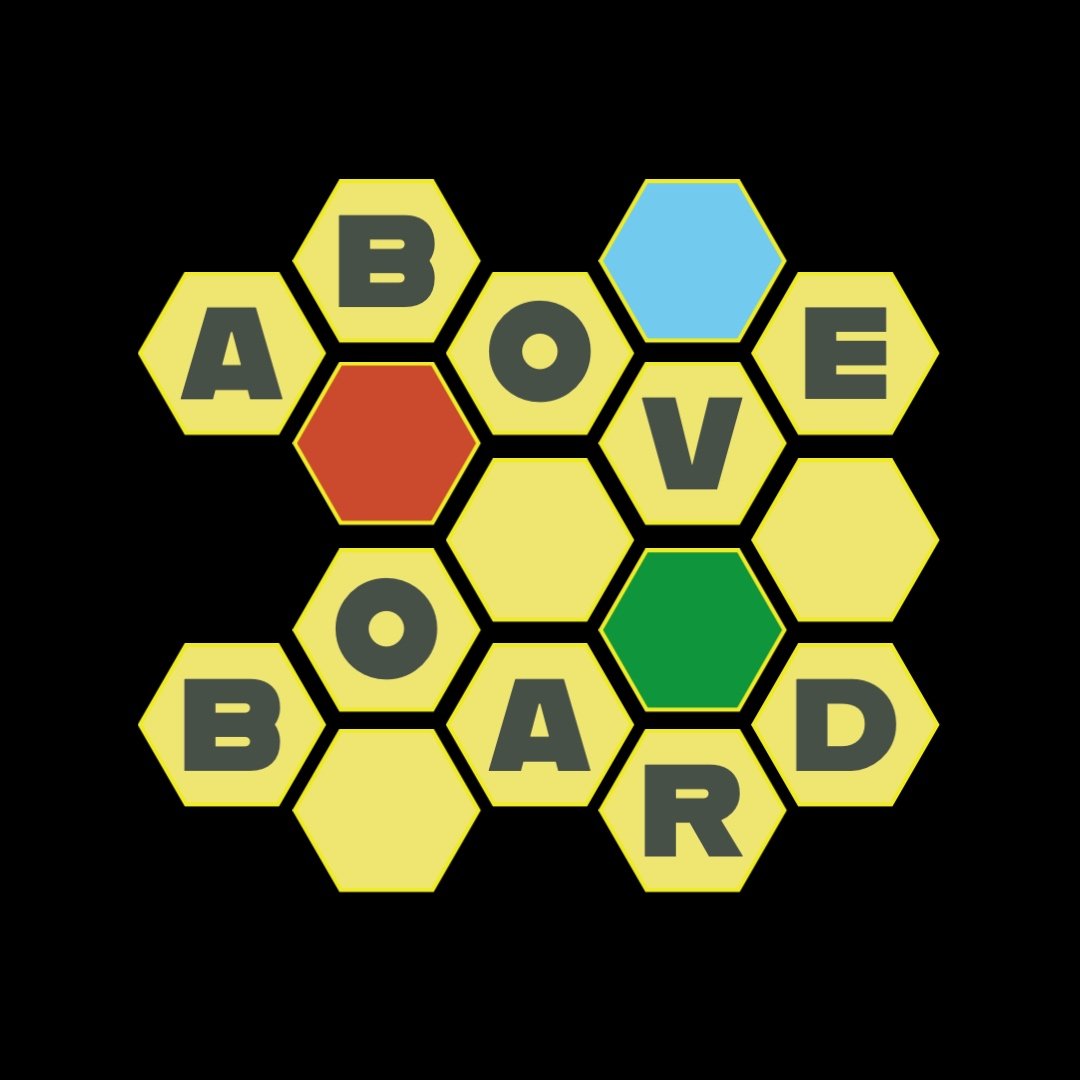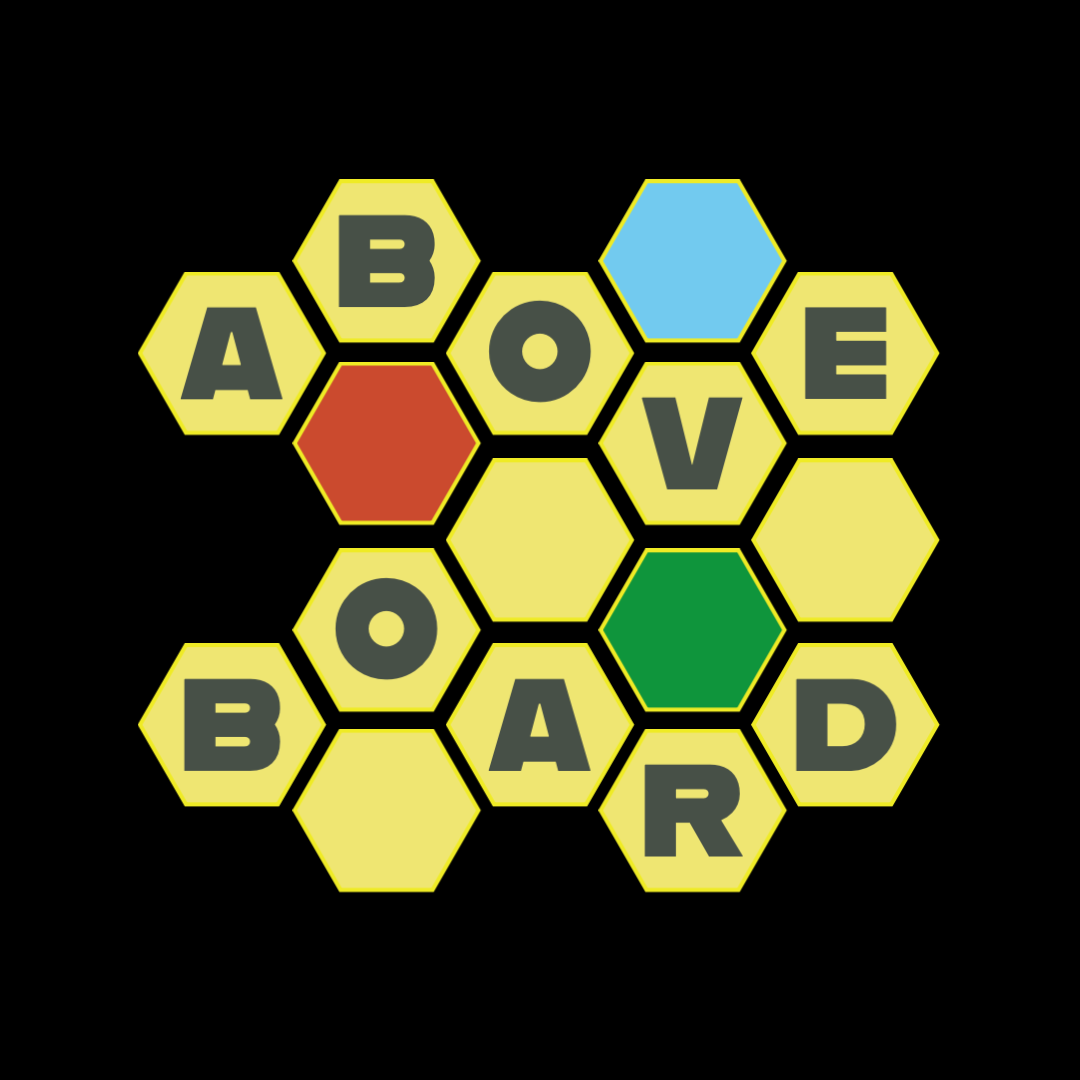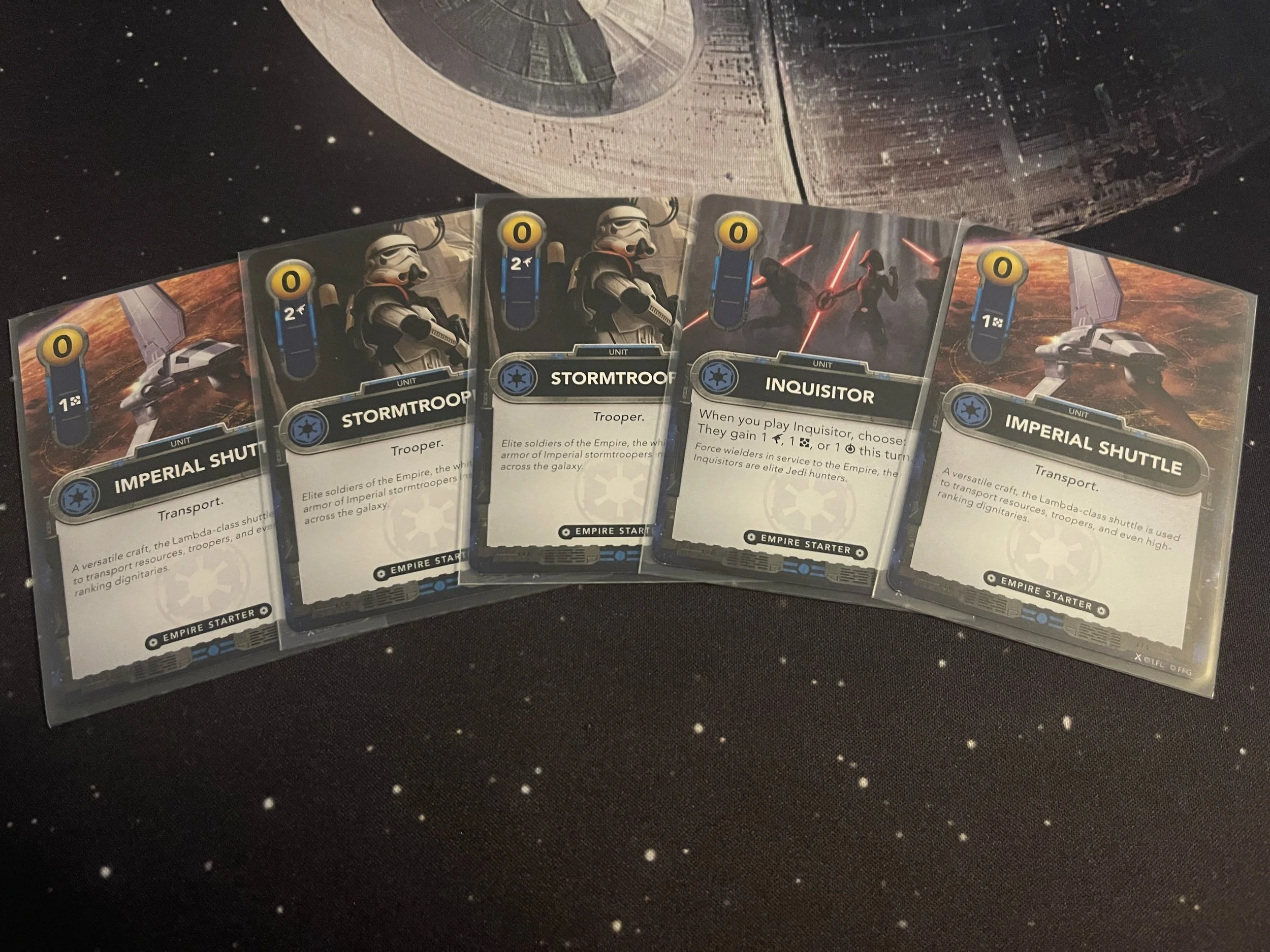Star Wars: The Deckbuilding Game Review
A long time ago, in a galaxy far, far away, a deckbuilder was made, again…
2 Players 30 Min Age 12+
Designer: Caleb Grace
Artist: Various
Publisher: Fantasy Flight Games
Hello There
Star Wars: The Deckbuilding Game, from Fantasy Flight Games (FFG), is a self-contained 2-player deck builder set in the Galactic Empire era of the classic Star Wars universe and features characters from the original trilogy as well as the more recent Rogue One film. The classic Rebel vs. Empire conflict is the perfect backdrop to this tightly focused competitive game and the simplicity works in its favour… for the most part.
For those of you unfamiliar with deck building, the mechanism typically has players begin with a small deck of 10 basic cards from which players may draw a hand, in this case, 5 cards. Each player’s deck begins the same and throughout the game, they purchase or otherwise acquire more powerful cards to add to their deck, often finding complementary cards that work well with each other to chain abilities resulting in powerful turns. There are many deckbuilding games out in the wild and they all try to do something a little different.
The game shares a lot in common with similar games, such as Star Realms, in that you are trying to destroy your opponent’s bases. Most games consist of three bases, but you can play longer games by playing up to four or more depending on the length of game you desire. On the surface, Star Wars: The Deckbuilding Game looks about as typical as they come in the genre, but beneath the surface, this game has a few tricks up its sleeve that set it apart from its peers.
The most obvious difference at the outset is the Galaxy row which functions as the market from which new cards can be purchased. The deck is split into three card types, Rebel Alliance, Galactic Empire, and Neutral. The Rebel and Imperial cards are placed into the row facing toward their player while the neutral cards are placed sideways indicating they are unaligned. Where things begin to get interesting is on the bottom of the two factions’ cards facing their opponent are rewards that their opponent can obtain by attacking and removing the card. So if a player has enough damage to spare, they can mess with their opponent’s plans with a well-timed attack.
Another feature unique to this game is the Force which comes into play via a tracker placed on the side of the play area. This light vs. dark-side tug-of-war allows players to trigger additional abilities on many of their faction cards depending on whether the Force is with them or not. For example, an ability may require an opponent to discard a card from their hand, but also, if the Force is with you, they must discard a random card rather than choosing one. These effects are subtle but often game-changing and while it’s perfectly possible to win a game without ever investing in the force, the game does tempt you to do so, which feels appropriate to the theme.
Great Shot Kid, That Was One In A Million
FFG plays with the Star Wars IP like Emperor Palpatine with a new doomsday weapon, they go on and on about how powerful it is until it all falls apart, then its never mentioned again and on to the next big thing, like Star Wars Destiny, or from their beloved hit miniatures game, X-Wing to the letdown of their hit miniatures game X-Wing by fobbing it off to Atomic Mass who has no idea what X-Wing even is based on what they’ve done to it… but I digress.
In this case, Star Wars The Deckbuilding Game can be chalked up as a mild success for FFG in that it does what it says on the tin (even the first Death Star managed to destroy at least one planet). It’s a solid if somewhat uninspired deck builder that manages to squeeze in just enough new ideas to prevent it from being completely derivative. Okay, so that last sentence ended up sounding considerably more negative than I intended, yet, I feel it sums up this game well. I enjoy deck builders, like, a lot! They’ve become one of my favourite genres of tabletop gaming and Star Wars provides all the things I enjoy about them, starting out with a weak ineffectual deck of cards and gradually expanding and pruning it into a Force (pun absolutely intended) to be reckoned with. FFG also played it safe with the fan base by sticking to the undisputedly good films such as the Original Triology. What this means is you get a tightly constrained, yet satisfying gameplay experience right out of the box. There’s no Rey Palpatine to be found here!
This little-deck-builder-that-could manages to pull off the tricky balancing act of appealing to both newcomers and seasoned gamers. It’s a small, un-intimidating box with more than enough cards to allow players to get their teeth into the game and build powerful, rewarding decks. For those already familiar with deck-building mechanisms, the clever use of the galaxy row and the Force invites some innovative gameplay and expands the decision space, when there are slim pickings in the game’s galaxy (market) row, just pick off one or two of your opponent’s cards before they can recruit them and you’ll not only be rewarded with the effect on the bottom of this card, but you’ll also succeed in partially refreshing the row in the hopes of more favourable options.
While the Force plays a strong role in the game by enhancing existing cards, it’s not a game-breaker if you choose to ignore it. You can get by just fine by purchasing cards that steer clear of it or simply don’t bother to use those enhanced abilities. You’ll still do fine. The opposite is also true if you choose to double down in the Force and build a deck based on that concept.
While the idea of destroying your opponent’s base isn’t anything new, the fact that games can utilise multiple bases throughout a single session, each with unique abilities, not only expands replay-ability but encourages new strategies, often causing players to change up their tactics mid-game if they lose a particularly valuable base. Using capital ships to reinforce and protect your bases is also a key element which again, while the idea appears in other games, this time it’s Star Wars! Star Destroyers, Corellian Blockade Runners, and more make their familiar hulls known and they all feel good to play.
One aspect that works in this game’s favour is the absence of expansions. Too often nowadays it feels that expansions are necessary to get the most out of a game, and more often than not that applies even more so to deck builders where players will soon tire of seeing the same old cards time and again. Here, though, I feel it works in Star Wars’ favour, it’s a small, quick, light 2-player game, you might play one or two games in an evening and then be done for a couple of weeks. My son and I have played it regularly for months and it still feels fun and exciting as you continue to explore all the options. Could it benefit from expansions? Of course and if they release any, I’ll probably pick them up, but the game doesn’t suffer from a lack of content and feels like a complete experience in its current state.
We Were On The Verge Of Greatness, We Were This Close
Having said that, the lack of expansions could be a drawback for many players who are looking for a more full-bodied Star Wars deck-building experience. Thankfully, FFG heard the thousands of voices crying out in terror and have recently delivered exactly that with their new Star Wars Unlimited Trading Card Game (TCG).
Another point against this title is that for many, it’s going to feel a bit too light. Star Wars is a rich and varied universe and the number of possible options is nearly limitless, so fans of the IP who buy this one hoping to see all their favourite obscure characters, like Malakili, the rancor handler, or that first guy who gets turfed into the Sarlacc, are going to be disappointed. There was talk of expansions early on, but it’s been fairly quiet recently, and now with the new Star Wars: Unlimited card game taking up all of FFG’s limited attention span, the likelihood of them continuing to support this dinky little title remains questionable.
Now, Witness The Power Of This Fully Armed And Operational Battlestation
How does Star Wars The Deck Building Game stack up when it comes to presentation? Not too bad. The artwork is stellar, and while much of it is reused from other games, the quality can’t be faulted. I don’t blame FFG for reusing artwork, it appears this game was more of a mass market quick to retail affair while they worked on larger games, so bearing that in mind, the cards and graphic design all look great.
The insert is functional and supports sleeved cards, however, the folding card used for the Force tracker feels a bit flimsy, so take care not to tear it. There are also several purple and yellow cubes to represent damage and resources respectively, though I find them mostly cumbersome and unnecessary as it’s faster and more efficient to just total up the values on the cards and get on to the next step. The purple and yellow seemed like odd colour choices too.
And He Was A Good Friend
It may feel like I’ve been quite harsh on this one, but to be honest I do enjoy the game. We’ve played it so much and it’s perfect for a quick, enjoyable game if you don’t have time or energy to set up anything more robust. Deck builders don’t need to keep reinventing the wheel, people like them because of what they already do, so the fact that Star Wars The Deck Building Game continues to do that with an added sprinkle of charm and a few new tricks is to its credit. It’s not likely to wow people who are familiar with the genre, but anyone looking for a self-contained card game with good-looking art and rewarding gameplay will be right at home here. If not, then this isn’t the game you’re looking for.
Thanks for reading! I’d love to hear your thoughts on Star Wars The Deckbuilding Game or if you have a favourite game from the franchise, feel free to share it here. Remember to join us on our Above Board Facebook group to keep up to date with upcoming reviews and we’re now on Instagram (I know, welcome to 10 years ago, Brian!). Until next time, take care, and may the Force be with you.












